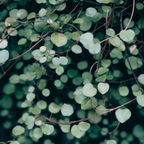
PHC- spores VS. propagules
There is a wide range of mycorrhiza products. However, there is a substantial difference between the various types. Read below to find out exactly what the differences are.


There is a wide range of mycorrhiza products. However, there is a substantial difference between the various species. There is a big difference between spores and propagules. The production method also makes a big difference in quality and effect. PHC produces its own spores under strictly controlled conditions. The difference in quality with cheaper mycorrhiza products is therefore very large.
Propagules
The production of propagules takes place in the open air. In the production, root fragments of plants that are in the nursery are provided with root fragments with one or more mycorrhiza species from the previous year's crop. After lifting, the fine roots are sieved from the sand and finely ground and mixed with seaweed or humus extracts.
The shelf life of propagules is about 2 months. After these 2 months, the germination depends on the (accidental) presence of spores in the mixture. Because the number of spores in the ground carrots is unknown, a mention of the quantity of carrot fragments on the packaging is sufficient. The production of propagules is the most common, but also the cheapest and easiest way of production. The major disadvantage is the limited storage life and that there is no guarantee of authenticity of variety or absence of pathogens.
Properties of propagules:
- Different species mixed together
- Simple production method in open soil or in containers
- Limited storage life
- No guarantee for absence of pathogens
- Mixture of a single cultivation cycle
Spores
The production of spores (by PHC) takes place in greenhouses under controlled conditions. The different mycorrhiza types are grown in different locations to prevent mixing of species. During the drying up process of the host plants, the mycorrhizae in "death throes" produce an enormous amount of spores. These spores are sieved, purified, dried and counted according to a certain method.
The closed conditions and the sterilised growth medium prevent contamination by pathogens. Each batch of spores is tested for pathogens. Because the harvest can vary every year, spores from 3 years are mixed to guarantee a constant quality. Depending on the application and processing method, the species are mixed and packaged. The species and number of spores are exactly indicated on the packaging. PHC products are free of pathogens and have a shelf life of at least 5 years in closed packaging.
Properties of PHC spores:
- Separate production of different species
- Production method in pots under controlled conditions
- Stored for at least 5 years
- Guaranteed free of pathogens
- Nederlands
- English
- Deutsch
- Francais